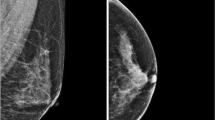Abstract
MR-based methods have acceded an important role for the clinical detection and diagnosis of breast cancer. Dynamic contrast-enhanced MRI of the breast has become a robust and successful method, especially for the diagnosis of high-risk cases due to its higher sensitivity compared to X-ray mammography. In the clinical setting, the ANN has been widely applied in breast cancer diagnosis using a subjective impression of different features based on defined criteria. In this study, several neural networks classifiers like MLP, PNN, GRNN, and RBF has been presented on a total of 112 histopathologically verified breast lesions to classify into benign and malignant groups. Also, support vector machine has been considered as classifier. Before applying classification methods, feature selection has been utilized to choose the significant features for classification. Finally, to improve the performance of classification, three classifiers that have the best results among all applied methods have been combined together that they been named as multi-classifier system. For each lesion, final detection as malignant or benign has been evaluated, when the same results have been achieved from two classifiers of multi-classifier system. Tables of results show that the proposed methods are correctly capable to feature selection and improve classification of breast cancer.





Similar content being viewed by others
References
Chen W, Giger L, Brick U (2006) A fuzzy C-means (FCM)-based approach for computerized segmentation of breast lesions in dynamic contrast-enhanced MR imaging. Acad Radiol 13(1):63–72
Szabo BK, Wiberg MK, Bone B, Aspelin P (2004) Application of artificial neural networks to the analysis of dynamic MR imaging features of the breast. Eur Radiol 14:1217–1225
Lucht RE, Knopp MV, Brix G (2001) Classification of signal–time curves from dynamic MR mammography by neural networks. Magn Reson Imaging 19:51–57
Vergnaghi D, Monti A, Setti E, Musumeci R (2001) A use of a neural network to evaluate contrast enhancement curves in breast magnetic resonance images. J Digit Imaging 14(2 Suppl 1):58–59
Nie K, Chen J-H, Yu H, Chu Y, Nalcioglu O, Min-Ying S (2008) Quantitative analysis of lesion morphology and texture features for diagnostic prediction in breast MRI. Acad Radiol 15:1513–1525
Nirooie M, Abdolmaleki P, Tavakoli A, Gity M (2009) Feature selection and classification of breast cancer on dynamic magnetic resonance imaging using genetic algorithm and artificial neural network. J Electr Syst 5(1):5–18
Arbacha L, Stolpenb A, Reinhardta JM (2004) Classification of breats MRI lesions using a backpropagation neural network (BNN). Biomedical imaging: nano to macro, 2004. IEEE international symposium on, vol 1, pp 253–256
Bhooshan N, Giger M, Edwards D, Yuan Y, Jansen S, Li H, Lan L, Sattar H, Newstead G (2011) Computerized three-class classification of MRI-based prognostic markers for breast cancer. Phys Med Biol 56(18):5995–6008
Newel D, Nie K, Chen J-H, Hsu C–C, Yu H-J, Nalcioglu O, Su M-Y (2009) Selection of diagnostic features on breast MRI to differentiate between malignant and benign lesions using computer-aided diagnosis: difference in lesions presenting as mass and non-mass-like enhancement. Eur Radiol 20(4):771–781
American College of Radiology (ACR) (2003) Breast imaging reporting and data system (BI-RADS) breast imaging atlas. ACR, Reston
Gibbs P, Turnbull LW (2003) Textural analysis of contrast-enhanced MR images of the breast. Magn Reson Med 50:92–98. doi:10.1002/mrm.10496
Haralick RM, Shanmugam K, Dinstein I (1973) Texture features for image classification. IEEE Trans SMC 3:610–621. doi:10.1109/TSMC.1973.4309314
Sahiner B, Chan HP, Wei D, Petrick N, Helvie MA, Adler DD, Goodsitt MM (1996) Image feature selection by a genetic algorithm: application to classification of mass and normal breast tissue. Med Phys 23:1671–1684
Bajpai P, Kumar M (2010) Genetic algorithm—an approach to solve global optimization problems. Indian J Comput Sci Eng 1(3):199–206
Sun Z, Bebis G, Yuanl X, Louis SJ (2002) Genetic feature subset selection for gender classification: a comparison study. Applications of computer vision, proceedings. Sixth IEEE workshop, pp 165–170
Haykin S (1999) Neural networks: a comprehensive foundation, 2nd edn. Prentice-Hall, Upper Saddle River, NJ, USA
Mashor MY, Esugasini S, Mat Isa NA, Othman NH (2007) Classification of breast lesions using artificial neural network. IFMBE Proc 15:45–49
Al-Daoud E (2009) A comparison between three neural network models for classification problems. J Artif Intell 2:56–64
Mao KZ, Tan KC, Ser W (2000) Probabilistic neural-network structure determination for pattern classification. IEEE Trans Neural Netw 11(4):1009–1016
Niwa T (2003) Using general regression and probabilistic neural networks to predict human intestinal absorption with topological descriptors derived from two-dimensional chemical structures. J Chem Inf Comput Sci 43:113–119
Haykin S (2001) Redes Neurais: Princ′ ıpios e Pr′ atica, 2nd edn. Bookman, Porto Alegre
Burges CJC (1998) A tutorial on support vector machines for pattern recognition. Kluwer, Dordrecht
de Oliveira Martins L, da Corrˆ ea Silval E, Corrˆ ea Silval A, de Paiva A, Gattass M (2007) Classification of breast masses in mammogram images using Ripley’s K function and support vector machine. Machine learning and data mining in pattern recognition. Lect Notes Comput Sci 4571:784–794
Subashini TS, Ramalingam V, Palanivel S (2009) Breast mass classification based on cytological patterns using RBFNN and SVM. Expert Syst Appl 36:5284–5290
Ireaneus Anna Rejani Y, Thamarai Selvi S (2009) Early detection of breast cancer using SVM classifier technique. Int J Comput Sci Eng 1(3):127–130
Kohavi R (1995) A study of cross-validation and bootstrap for accuracy estimation and model selection. International joint conference on artificial intelligence (IJCAI)
Author information
Authors and Affiliations
Corresponding author
Rights and permissions
About this article
Cite this article
Keyvanfard, F., Shoorehdeli, M.A., Teshnehlab, M. et al. Specificity enhancement in classification of breast MRI lesion based on multi-classifier. Neural Comput & Applic 22 (Suppl 1), 35–45 (2013). https://doi.org/10.1007/s00521-012-0937-y
Received:
Accepted:
Published:
Issue Date:
DOI: https://doi.org/10.1007/s00521-012-0937-y




